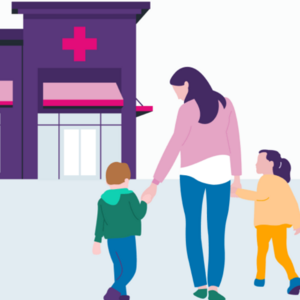
Feel better faster. Get care today.
From the clinic or your couch. Find high quality, same-day urgent care for you and your kids. Book an urgent care visit today.

Warning: An electric shock can cause life-threatening arrhythmias (irregular heartbeats), cardiac arrest, and even be fatal according to the American College of Emergency Physicians (ACEP). Call 911 if you or someone you know has sustained an electric shock and is unconscious or having an irregular heartbeat.
An electric shock (also known as an electrocution) can be life-threatening depending on factors like the strength and type of electric current. But if you get an electric shock from low voltage, you can usually take care of yourself at home. Although there are some things you should be aware of—like the symptoms of electrocution and when to see a doctor.
An electric shock happens when you come into contact with a live source of electricity. This is sometimes called an electrocution. The severity of an electric shock depends on if it is a high voltage or low voltage electrical source. An electrical burn is an injury resulting from an electric shock. If the voltage is high enough, skin and other tissues around the shock can be charred. Additionally, high voltage electric shock injury can cause nerve damage, heart arrhythmias, and even be fatal.

From the clinic or your couch. Find high quality, same-day urgent care for you and your kids. Book an urgent care visit today.
Electrical shock occurs when you come into contact with a live source of electricity—some of the most common electrical hazards are:
An electrical shock can be a serious injury. Here is exactly what to do if you or someone you know is electrocuted according to the ACEP.
The symptoms of electric shock can vary, depending on the amount of electric current you come in contact with, according to the ACEP. They list the following as symptoms of a severe electric shock that needs medical attention:
The ACEP recommends that you call 911 if you or someone you know has any of the following symptoms:
When you seek medical treatment for an electric shock, the ACEP notes that you can expect your healthcare provider to run tests to check your heart and the soft tissues around the burn site. They also note that most electric shock patients can go home unless there is serious damage to the heart or serious burns.
Burn care for minor burns usually includes topical antibiotic ointment and sterile dressings, according to the ACEP. More severe burns may require surgery and skin grafting. In rare cases, electrical burns may result in amputation of a digit or limb, according to the ACEP.
Electric shock can also cause injuries to the bones, organs, and eyes, according to the ACEP. Surgery or casts may be necessary to repair broken bones or damaged organs.
The best treatment for electrocution is prevention. Electrical safety is important whenever you are dealing with electricity, electrical cords, or electrical appliances.
Mild and moderate electrical burns and electrical shocks can be treated at an urgent care clinic. You can find your nearest urgent care clinic using Solv.
If someone is electrocuted, do not touch them directly. Instead, turn off the power source, separate them from the electrical source using a non-conductive material, and call 911.
Symptoms can include difficulty breathing, weak or erratic pulse, burns, muscle contractions, loss of consciousness, and cardiac arrest.
Call 911 if there are symptoms like burned or charred skin, confusion, difficulty breathing, heart arrhythmia, cardiac arrest, muscle pain or contractions, seizures, or loss of consciousness.
Treatment depends on the severity of the shock. It can range from burn care for minor burns to surgery and skin grafting for severe burns. In some cases, surgery or casts may be necessary to repair broken bones or damaged organs.
No, it's recommended to seek medical help immediately. Even for minor shocks, it's important to get checked for any internal injuries that may not be immediately apparent.